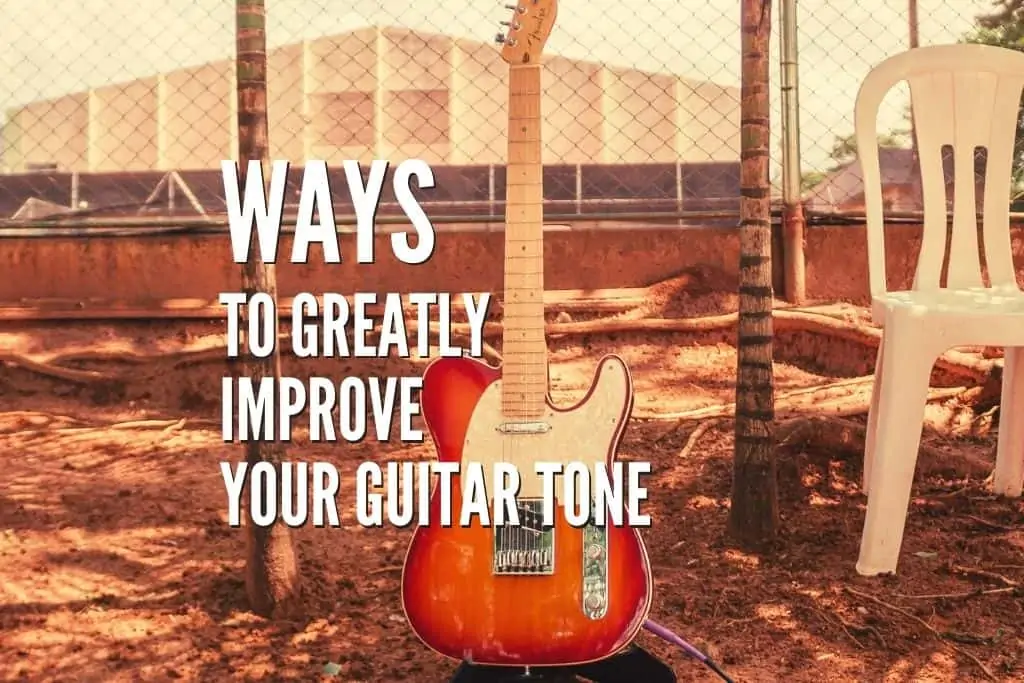There are many factors that impact the guitar tone. By making some small changes you can improve your guitar tone by a wide degree. The list below should help you maximize your guitar tone and improve your sound.
Try making some small changes and see how this works for your tone. You may find an improved tone once you make a few adjustments.
Change Your Old Guitar Strings
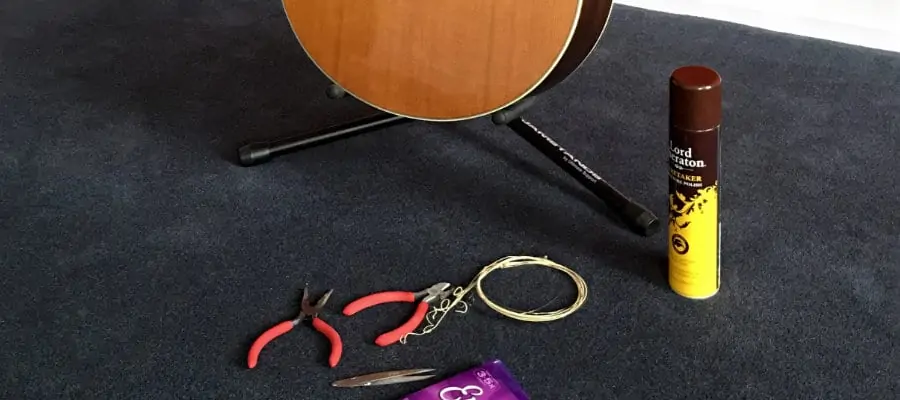
Old, rusty guitar strings cause poor tone. It’s a good idea to change your strings at least once every 3 months or 100 hours of play. Your strings accumulate dirt and grime and they lose tone as they oxidize. If you notice poor tone, put on a fresh set of strings and you’ll notice a big difference.
You might want to try coated strings. These won’t oxidize as fast and you’ll find that they tend to last several months before you need to replace them. The tone doesn’t degrade and your guitar sounds great.
You also save a lot of money so try some coated strings if you want a better tone.
If you still uncertain about your guitar strings you can check out my recommendation Best Electric Guitar Strings – How To Choose & Change Them?
Try Heavier Strings
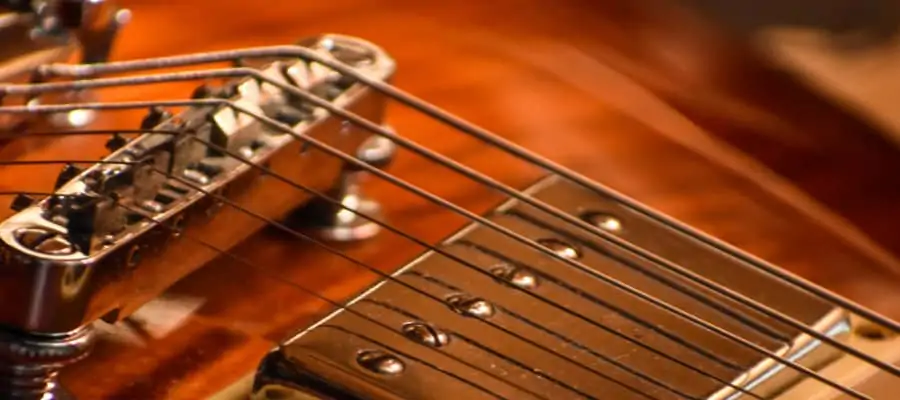
Light guitar strings can sometimes cause a poor tone. If you use a 9 or an 8 gauge, try moving up to 10s. You’ll find that the 10s tend to improve tone by a wide margin. While you get by with 9s, 10s do add extra tone and sound a bit better.
If you still want to use 9s, you may have to play around with guitar effects and your amplifier more to get a good tone. A distorted guitar tends to sound fine with 9s but the signal isn’t as strong when you play clean passages.
On an acoustic guitar, you’ll notice this even more. Heavier acoustic strings are harder to play but the tone you get out of them makes the acoustic sound good.
You may have to work your fingers up to a heavier set but this is well worth the extra effort.
Use A Quality Guitar Cable
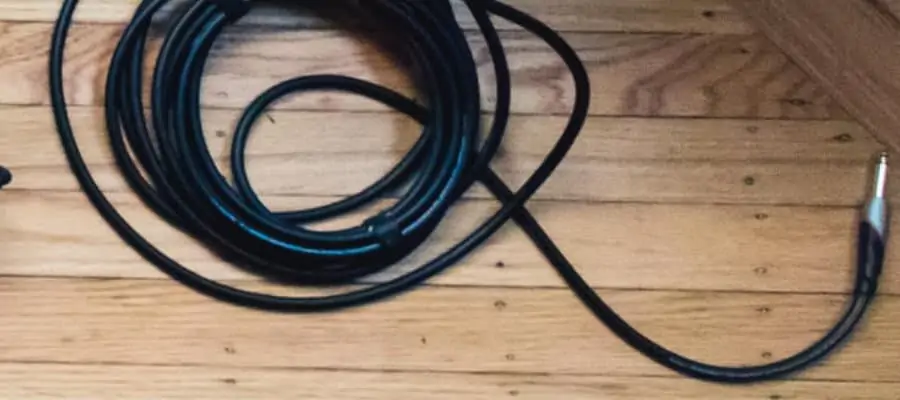
When you use a quality guitar cable, you get a better signal. Many cables aren’t made well and your tone suffers. You should be using cables that have a decent plug and ones that have shielding.
This provides a nice clean signal from the amp to the guitar. Poor cables tend to cause cracking and other sounds that lower the tone of your guitar.
A shielded cable blocks external sounds that interfere with the guitar tone. This is helpful if you have other equipment by your guitar amp that may cause noise.
Try to buy braided cables as these don’t bunch up as regular cables do. These guitar cables tend to last for years without ever needing replacement. Avoid cables that are too long as the signal degrades. Only use the length that you need.
if you are interested to get a quality guitar cable, you can check it in my post Top 27 Must Have Guitar Accessories For Every Guitarist
Dial Back the Gain
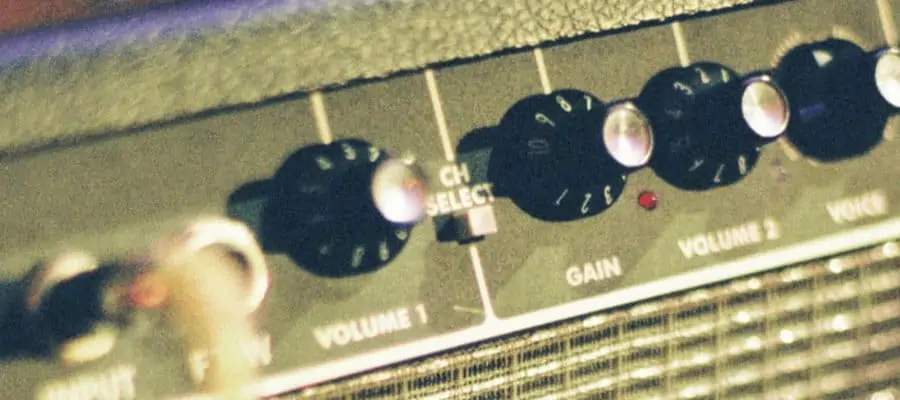
Distortion sounds great but it can impact your guitar tone. Many people dial up the distortion far too high. Your tone improves when you dial back the gain to a more reasonable level.
Most amps sound best when you don’t crank the gain control.
You need to experiment to find the “sweet spot” by fiddling with the amps gain controls. Try a few settings and see what works best for you. Turning things up a bit to find the best tone and settings for your needs.
Make sure you do the same with any distortion pedals you have. Dialing everything to ten won’t produce a good tone in most circumstances.
Use a Different Pick
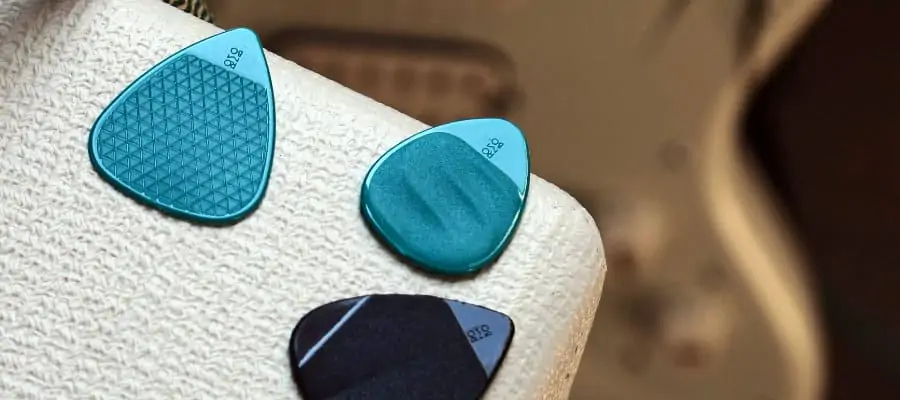
The type of pick you use impacts your guitar tone. A light pick doesn’t dig into the string as much as a heavier pick and it makes it harder to pick faster guitar lines.
Light picks work well for strumming chords but not as well for single-note guitar lines. You get more sustain out of the string with a heavier pick.
Try experimenting with different-sized picks. You’ll find the heavier picks tend to produce a better tone when you compare them with thin picks.
You’ll have to try several brands of picks to find a set that works for you the best.
If your picks still feel uncomfortable to you, then you need to check my recommendation Best Guitar Picks & How To Choose The Right Pick For You
Setup Your Guitar Properly
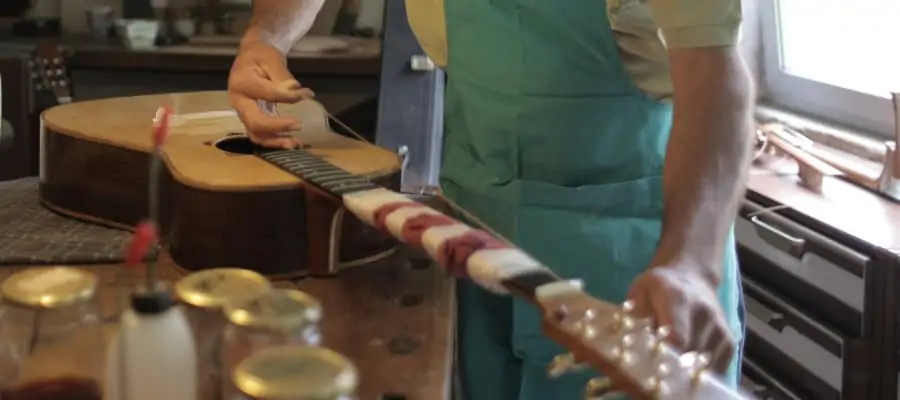
Proper setup includes things such as proper pickup height. You’ll get a better tone if you adjust the pickup height. This is subjective so you need to experiment to find the tone from your pickups that you like the best.
The string action should be set a little higher than normal as this will give the guitar a bit more sustain. Experiment with your action until you find the tone that you like the best.
Intonation is another factor in tone. If the intonation is off by a wide margin, the instrument won’t be in tune at the higher frets.
Poor intonation impacts your tone if the guitar is out of tune when you play higher up the neck. Good intonation gives you an even tone at every fret as the whole guitar is in tune.
Clean Your Guitar Fretboard
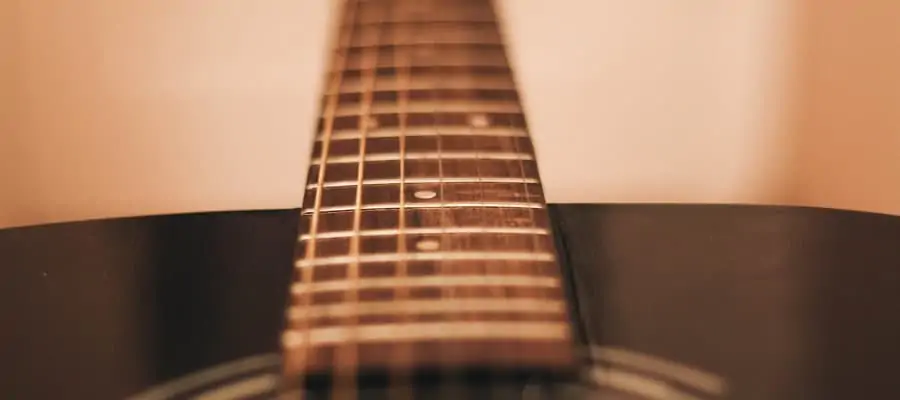
Many players neglect the fretboard of their guitars. This builds up with gunk and grime. Notes may not sound out as clear if there is a lot of gunk getting in the way of a pure-sounding note.
This debris should be removed to improve the tone.
Before you place a fresh set of strings on your guitar, clean the fretboard. This improves tone and makes the fresh set of strings last longer. Make it a habit to clean everything often.
Your local guitar store has cleaning products you can use to clean the fretboard. Try wiping down the strings after each use to reduce grime buildup.
If you are interested to know more about cleaning your guitar, you can check out my post How To Clean An Electric Guitar – 10 Easy Steps
Adjust The Tone Controls Of The Amp
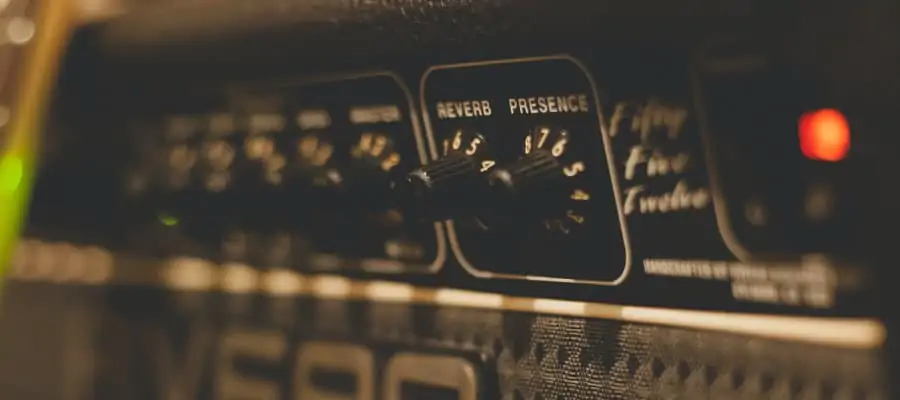
You may neglect these in favor of distortion or other settings but they matter. Try adjusting your tone controls for improved tone.
Refrain from setting all the knobs to ten. Many players do this but it’s never a good idea. Dial back everything and then turn up the settings a bit at a time. You’ll often find a better tone this way. You should do the same with other settings like the reverb control if your amp has it.
Dial all the controls back and turn them up a bit at a time until you reach your desired tone. If you play more rhythm you might want more bass. If you play the lead, you might want more treble.
Experiment and find the right settings for your needs.
Make Sure Hardware Is Stable
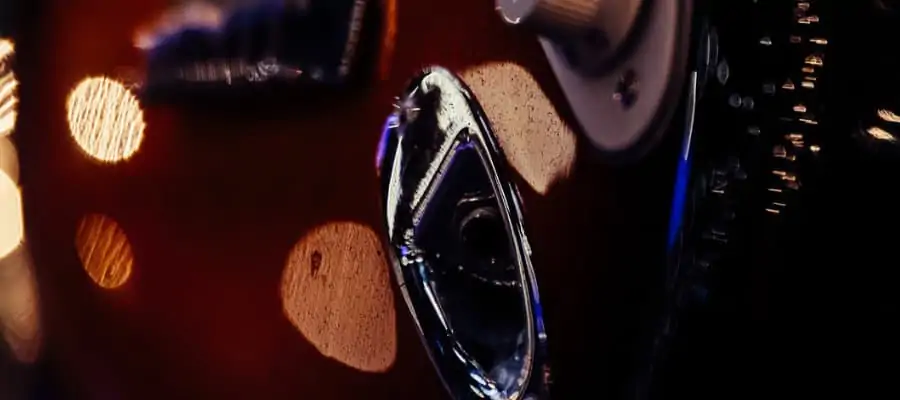
You could suffer from poor tone if you have loose guitar hardware. Some causes include loose wires, pots, and input jacks. For example, a loose input jack may cause the amp to crack more often.
The guitar sound might cut in and out with a loose jack.
Anything that is loose or rattles on the guitar may impact tone. Ensure that the knobs are tight and the bridge is secure.
Check the tuning pegs and tighten them if they are loose. Open up the guitar body and look for loose wires or anything else that isn’t secure.
Rearrange Your Guitar Pedals
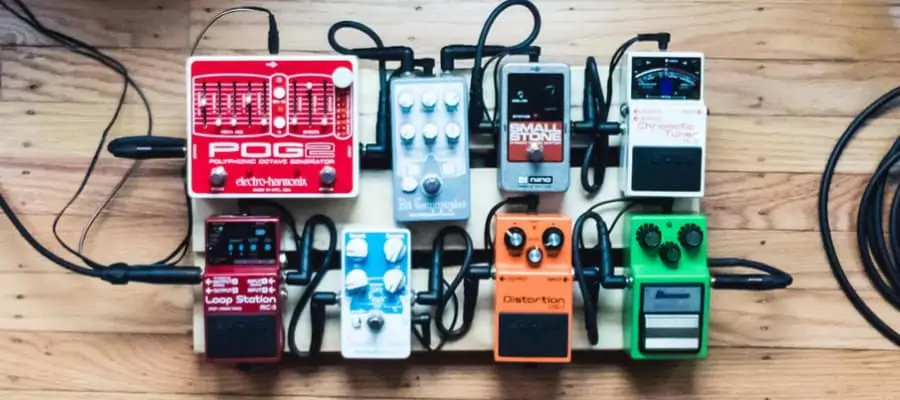
If you use guitar pedals the signal chain impacts your guitar tone. It’s not a good idea to put pedals in any old order.
You don’t have to worry about the effects impacting tone are built into your amplifier. Use the guide below to chain your pedals in the right way for the best tone and a good sound:
- Filters– These are pedals for various frequencies. It includes pedals such as Eqs, compressors, wah, and volume pedals.
- Gain – The next section of your signal chain includes your gain and overdrive. It’s best to put these early in the signal chain for the best results.
- Modulation – This includes phases, chorus pedals, and other pedals. These should be around the middle of the signal chain.
- Time pedals – This includes reverb and delay pedals. They should be last in the chan and right before the amp signal.
You can experiment a bit with your guitar signal to maximize your tone but the above guide should work well.
Make sure you dial back settings on guitar pedals and move the dials up a bit at a time to get the best tone and a good signal. Don’t turn them all to ten as this won’t work.
Play with Fewer Effects
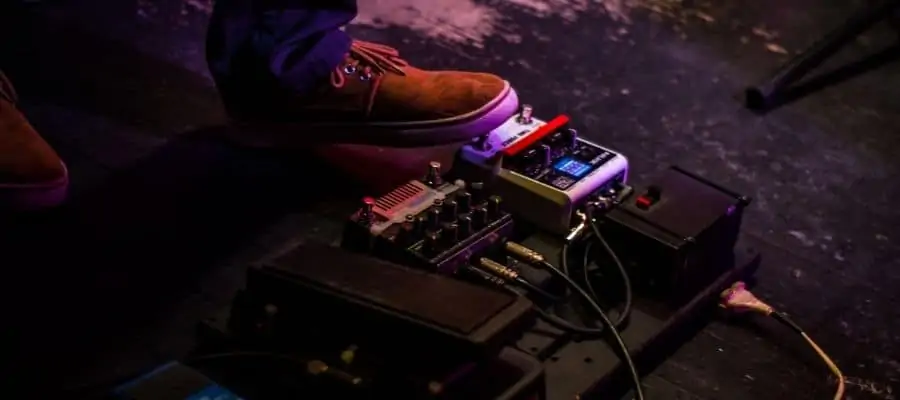
Guitar effects do sound good but you may be using too many of them. Effects built into your amplifier are fine but watch pedals. If you use a lot of pedals then your pure guitar signal won’t shine through as much.
Try plugging straight into your amplifier. Use the regular tone controls of the amp to get a good sound. If you feel it’s necessary, add in a few effects pedals.
You may find that the pure tone of the amp is a lot better than the effects. Start with the amp tone and then decide if you like the sound. Add pedals one at a time and only add what you need. Fewer pedals will mean a better tone out of your amp.
Add A Reverb Or Delay Pedal
Great room acoustic can improve greatly your guitar tone. However, we can’t always control the room’s acoustics that we are playing at. Whatever it is a live venue or our bedroom playing in a dull-sounding room can break your solo even if you play flawlessly.
Adding a reverb pedal or a delay pedal that is set up to short single feedback, also known as slap back delay, can do wonders to your solo and bring it back from the dead.
Learn About Your Amp Better
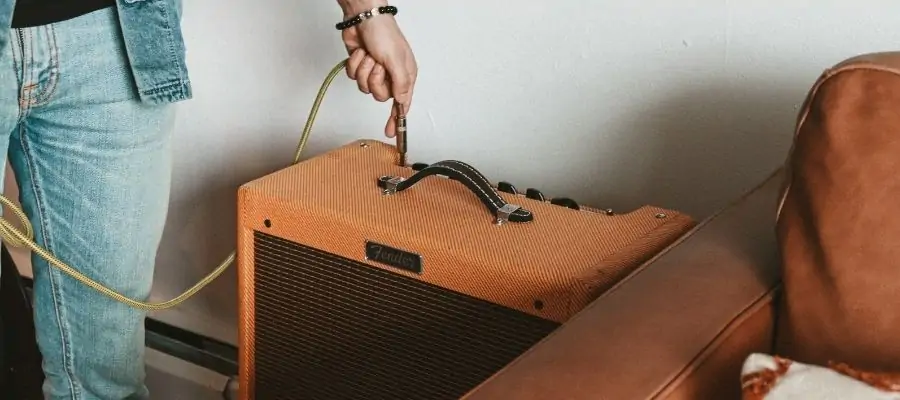
Every amp has its own sound, controls, effects. However, most of the amps share a similar type of control panel. Get to know your control panel and what each of the knobs does. Ask yourself the following questions.
What types of channels does the amp have? what does each of the equalizers knobs do and how it affects the tone? what effects does your amp have? Is there management software for the amp to edit its settings? does it has a presence knob or cabinet selection and how do they affect the tone? if it is a tube amp what valves do it and how will the tone change with different valves?
Try to experiment with each of the settings to get to know them better. There may be also video tutorials about the specific amp you have, try to watch those and see what other people do until you get the hang of things.
Get A Better Amp
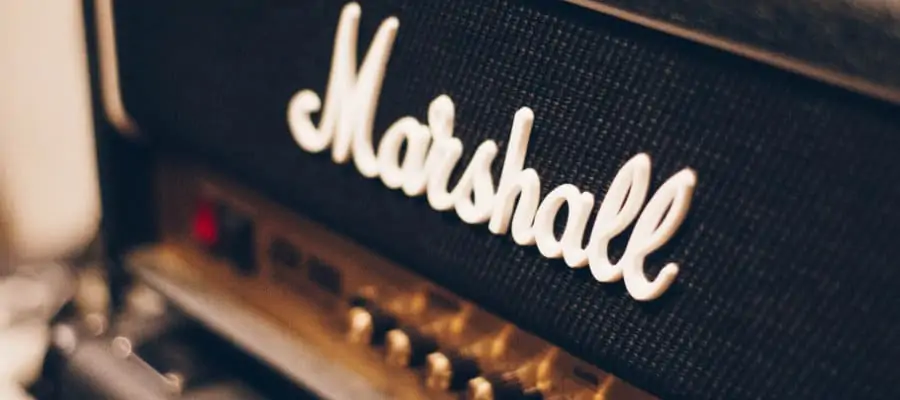
A poor amplifier will ruin your tone. Many start with a poor amp and this impacts your tone.
The signal on a budget amplifier is too weak to give you a solid and reliable tone. These amps could come with a poor speaker which also impacts the sound of the tone.
Cheap amps often have poor grounding and may buzz or hiss when turned up at a higher volume. They may rattle or make other noises as the parts aren’t attached in a solid fashion.
It’s better to spend a little more and get a decent amplifier that’s going to give you a great tone. Try to avoid the ultra-cheap budget amps as these don’t produce the sounds that you want from them.
if you have a low-quality amp, replace it and you’ll find that the tone improves.
Make Sure Frets Are Set Correctly
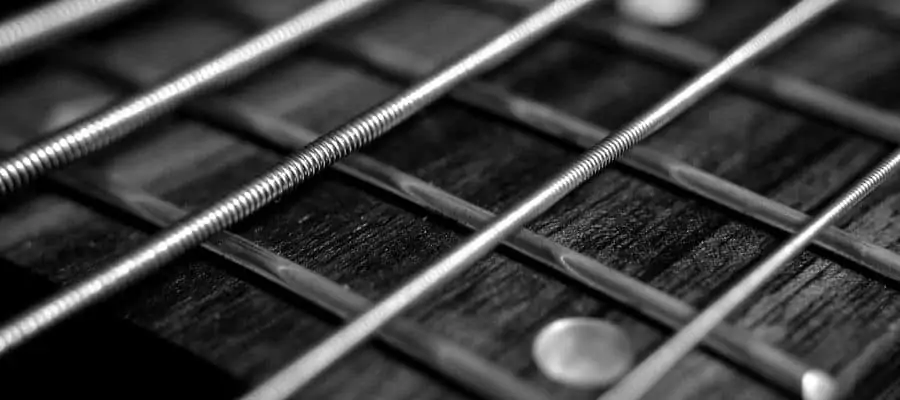
Another aspect of tone is the frets themselves. You want the frets leveled and free of bumps or dents.
Poor frets can cause notes to “fret out.” This means that you won’t get a clean tone from the note played. Check your frets for bumps and dents then check your tone.
You may find raising the guitar action eliminates the tone problem. In other cases, a fret dressing is the best option if the frets are too far gone.
A fret leveling removes the bumps and dents. Some frets need replacing during this procedure. This removes the roughness and the notes will ring out nice and clear.
A fret dressing is sometimes done on old guitars or ones that have a lot of mileage on them. If your guitar has a poor tone have the frets examined for imperfections.
Change Your Guitar Pickups
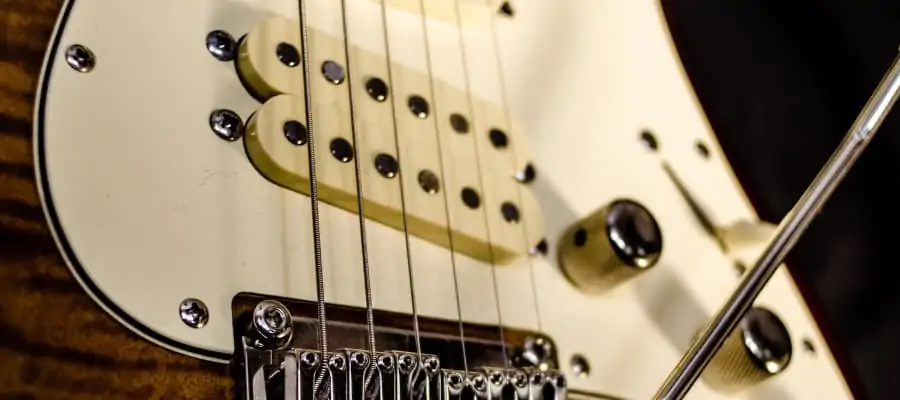
Your pickups play a big role in the guitar tone. Often a cheaper guitar comes with poor quality pickups. These pickups create a weak signal and the tone isn’t as good as it could be.
You want good-quality pickups for the best tone possible. This allows the best signal from the amp to your guitar.
By changing your pickups you may find that the tone improves more than you thought it might. You need to research pickups a bit as there are many different ones to choose from.
This is a cheap upgrade to your guitar as you’re only changing one part of it. It’s best to have a guitar technician to change your pickups. Don’t do this unless you have a clear idea of what to do.
Make Sure The Electronics Are Clean
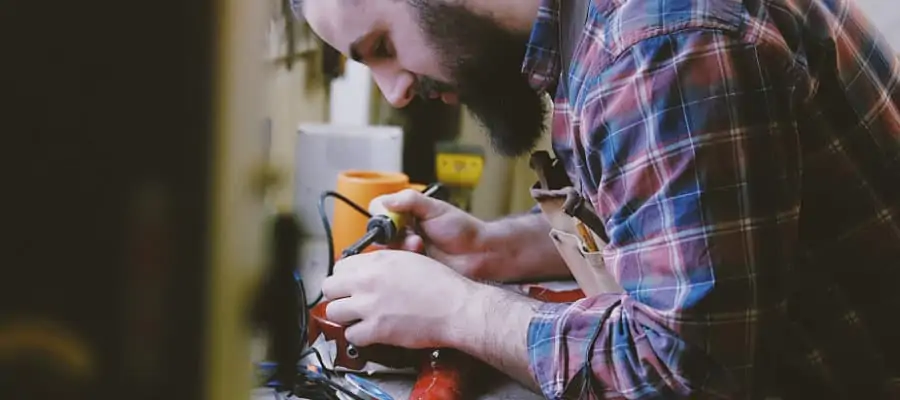
Your guitar electronics can become clogged with grime. The main suspects are the pots for the volume and tone controls. Grime on these can cause scratch sounds and the sound may cust out from time to time.
Use a guitar cleaner to remove the grime from these areas. Check the electronics such as the pickup selector switch to make sure it’s free of debris.
You should clean the bridge from time to time to remove dust and debris as this may also impact your guitar tone.
Clean dust away from the pickups and all other parts. You can do this before you put another set of fresh strings on your guitar. By cleaning your guitar parts on an ongoing basis, you’ll have a better tone.
Check The Truss Rod
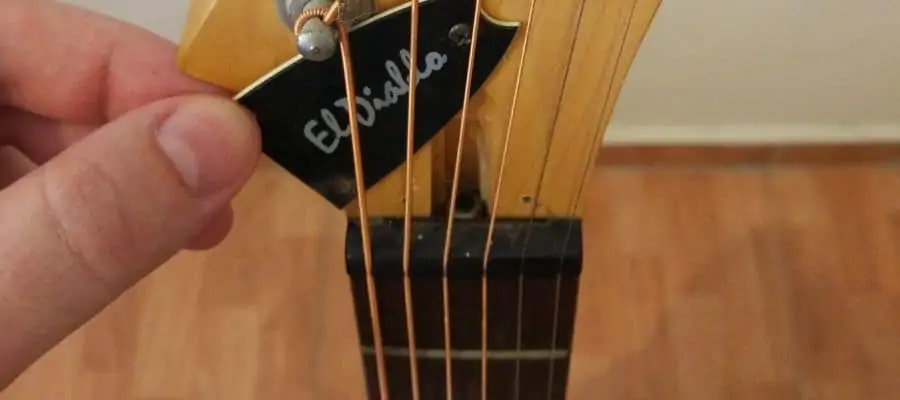
The truss rod of your guitar needs to be adjusted from time to time. On acoustic guitars, the weather can impact the wood. Your electric guitar may need adjustments as well.
You might find that the instrument has some dead notes if the truss rod doesn’t have the right adjustment or relief.
When you do adjustment give the rod a small ½ turn. Allow the instrument to rest for 24 hours and then adjust again.
The guitar needs time to adjust to the new truss rod changes. If you don’t know how to do this, see your local guitar tech for advice.
Change The Potentiometers
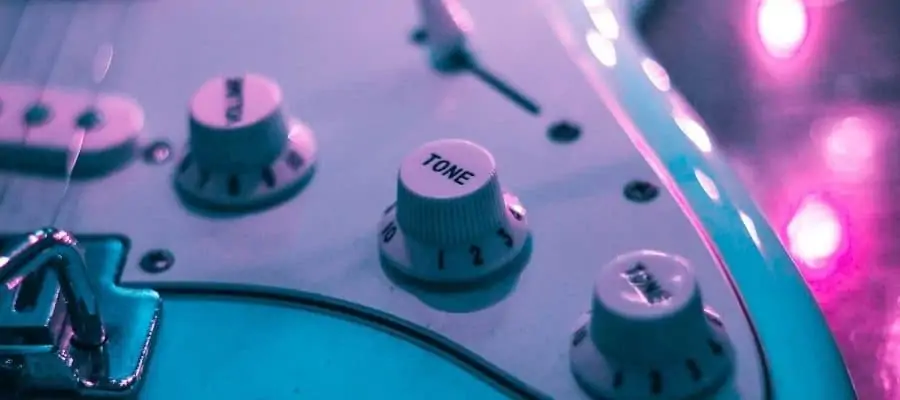
Your guitar potentiometers or amp potentiometers (pots) can impact the tone. These are the typical tone controls, volume, gain, and so on.
Make sure you clean these often to remove debris. Clean the pots with a contact cleaner. All you need to do is take the knob off and use the cleaner.
When they get dirty, you may have “scratching” that occurs when you turn them up. If they get worn out, you should replace them.
A new pot should improve the tone a great deal. They don’t cost much and you can even get ones that are better than the ones you have.
Experiment with Pickup Selector Switch
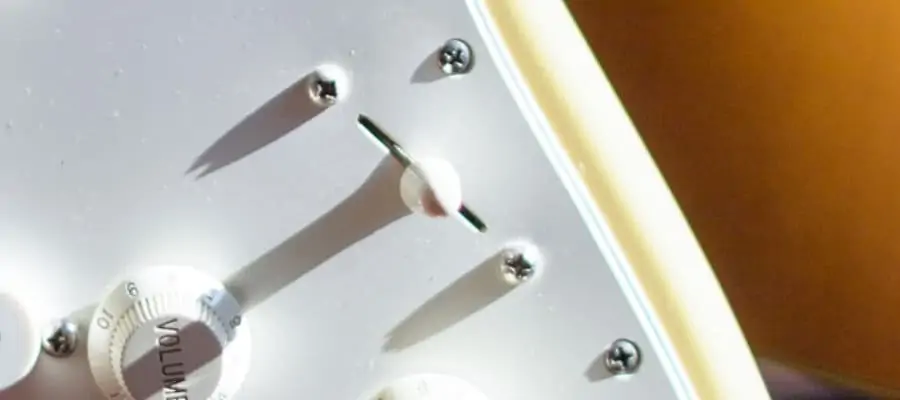
Your guitar has a pickup selector switch but many players ignore its different settings. This selector has more than a couple of sounds that you can use.
If you have a 5-way selector, try the middle position as these sounds might be what you’re looking for. Don’t rely on the bridge or neck pickup selector setting, try the other ones.
You can get a good tone out of the other settings. Use these along with the tone and volume controls of your guitar to create better tones.
Conclusion
These tips will improve your guitar tone. Your tone is subjective so what you like might not be what someone else likes. Experiment with tone until you find what works best for your needs.
These tips will improve your guitar tone. Your tone is subjective so what you like might not be what someone else likes.
Try making some changes to your tone and then reevaluate things. It’s often small changes that make a world of difference in how your music sounds.
A good tone comes from a combination of your guitar, amp, and your hands. Always experiment and find the tone that you like.
If you found this article useful, you may want to save this pin below to your Guitar board.

Recent Posts
When learning new songs have you noticed that some of the chord sequences sound really good? But when you tried to come up with your own chord sequence, or as we call it chord progression, you found...
Some guitarists insist on buying an expensive amplifier with their electric guitar. They assume that this is a must for every type of guitarist out there. However, in some situations, this isn’t...

